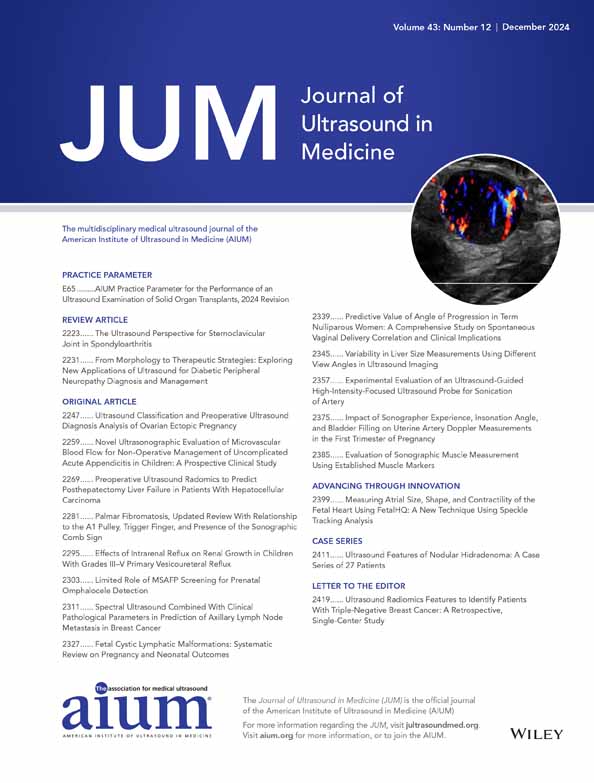Palmar Fibromatosis, Updated Review With Relationship to the A1 Pulley, Trigger Finger, and Presence of the Sonographic Comb Sign
Abstract
Objectives
Updated retrospective review of the sonographic appearance of palmar fibromatosis (PF) with evaluation of the utility of the Comb Sign previously described in plantar fibromas. Additional evaluation was conducted on the location relative to the flexor tendon, anatomic proximity of palmar fibromas to the A1 pulley and evaluate any potential association with trigger finger.
Methods
Medical record and imaging review was performed from 2017 to 2023, for patients with a new onset ultrasound or clinical diagnosis of PF. Clinical associations and imaging morphology were reviewed including presence of the Comb Sign, fibroma association with the A1 pulley, and fibroma association with trigger finger.
Results
Exactly 87 total fibromas in 53 patients were evaluated. The Comb Sign was present in 39% of fibromas, usually seen in transverse plane, more prevalent in multifocal disease and larger fibromas. Most (72%) palmar fibromas were within 1 cm of, contacted, or covered the A1 pulley (P < .001). Lateral extension beyond the flexor tendon axis can be seen (44%). Trigger finger and tenosynovitis were rare. However, volume and SI dimension of fibromas were associated with tenosynovitis (P < .0001) and all nine patients with concomitant trigger finger had fibromas within 1 cm from the A1 pulley.
Conclusions
The Comb Sign can aid in sonographic diagnosis of PF. Lateral extension of fibromas can occur. Most palmar fibromas have a significant intimate association with the A1 pulley, and presence of trigger finger with adjacent palmar fibroma can exist and is important for hand surgeons to know preoperatively.
Open Research
Data Availability Statement
The data that support the findings of this study are available from the corresponding author upon reasonable request.




